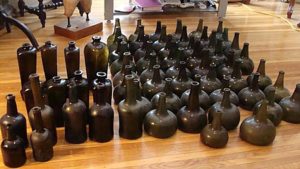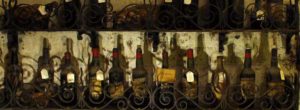
As a teacher of Wines, Spirits and all things food and beverage for almost 2 decades I was questioned a lot. Whenever questioned on a topic, I always made it a habit to go reconfirm my information. When out earlier this week, a gentleman at the bar was drinking a bottle of wine by himself and explained that a bottle used to be considered a daily ration and so did he. I always taught that 750ml became the standard in Europe when the majority of glass making moved to England with their coal fired glass shops in the late 18th and early 19th centuries. Not so coincidentally that is when cork as a closure also became the standard. I taught my classes that 750ML was the average that was set by glass producers that wanted to make glass quickly and this was roughly the lung capacity of the average male in those days. One breath equaled one bottle. A very model of efficiency. But as I was questioned, I went back and looked up my old assumptions.
This like so many things in the history of the alcohol business, seems to be up for debate. Historical
